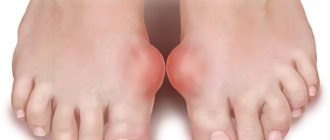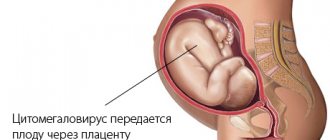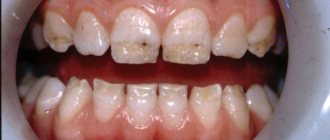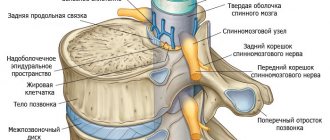Anovulation - main symptoms:
- Rash on face
- Lower abdominal pain
- Hair loss
- Menstrual irregularities
- Lack of menstruation
- Lack of ovulation
- Acne
- Infertility
- Male pattern hair growth
- Painful periods
- Uterine bleeding
- Increasing the duration of the menstrual cycle
- Inability to conceive a child
- Change in basal temperature
- Reducing the duration of the menstrual cycle
- Irregularity of menstruation
What is anovulation
Anovulation is a malfunction in a woman’s body, due to which the functioning of the ovaries is disrupted - they stop the monthly release of a mature egg, which leads to disruptions in the menstrual cycle and infertility. There are many reasons that can cause a malfunction in a woman’s body. The risk group includes women of reproductive age – from 14 to 35 years.
- Etiology
- Classification
- Symptoms
- Diagnostics
- Treatment
- Possible complications
Symptoms of anovulation are as follows: problems with conception, heavy or absent periods, severe pain during menstruation. Pathology is diagnosed when contacting a specialist, after conducting a comprehensive study.
If treatment is started on time, the prognosis is positive. With late therapy, depending on the cause, the percentage of recovery and restoration of reproductive ability decreases. In general, anovulation treatment requires only comprehensive treatment.
Anovulation – pathology or not?
Experts divide anovulation into two types:
- physiological type - a condition in which the maturation and release of the egg is impossible: this is the period of gestation, the period after the birth of the baby, when the woman is breastfeeding (up to six months). Anovulation is a characteristic phenomenon in girls under 10-12 years of age, as well as in women who have reached menopause and after menopause;
- pathological type.
During reproductive age, in addition to the period of waiting for a baby and breastfeeding, the absence of ovulation signals that a malfunction has occurred in the body. Often this is an imbalance of the nervous and hormonal systems, not controlling them between the pituitary gland and hypothalamus, which produce hormones responsible for the stable functioning of the reproductive system.
Short-term disruptions in the cycle can be caused by stress, fatigue, climate or time zone changes. This is a response from the body, which is a kind of respite before a possible pregnancy.
Causes of the disease
The process of ovulation, in the absence of pathology, occurs in any woman of reproductive age every month. This process occurs 14–16 days after the start of menstruation, when the follicle ruptures, releasing a mature egg, which enters the abdominal cavity and then into the fallopian tube. The whole process takes place under the control of certain hormones, which are aimed at stimulating the follicles.
When a mature egg is not formed and does not leave the ovary, anovulation is diagnosed.
The causes of anovulation are hidden in the following factors:
- high physical activity - in people involved in sports, with heavy loads on the body, the brain slows down the process of producing gonadotropic hormones, which contributes to the onset of the disease;
- stress and emotional changes;
- long-term use of medications often provokes failure of ovulation, especially if these are hormonal drugs.
Pathological causes of anovulation include:
- problems with hormonal levels;
- age characteristics;
- infectious and autoimmune diseases;
- ovarian depletion;
- high levels of prolactin in the circulatory system;
- problems with the adrenal glands;
- metabolic disorders;
- overweight or lack thereof.
Endocrine disruptions are the main reason for the lack of ovulation. Moreover, infertility causes not only anovulation problems, but also impaired blood circulation, tumor formations, injuries, and brain diseases.
Ovulatory cycle
Anovulation: causes, treatment methods and the possibility of pregnancy – Women's health site
Anovulation is a diagnosis that can be heard by a woman of any age, but it poses the greatest danger to young girls. This means that a serious failure has occurred in the body and it has stopped producing eggs. The most obvious consequence of such a metamorphosis is infertility.
But this does not mean that for those representatives of the fair sex, whose plans to have children no longer include, anovulation is not scary.
This diagnosis hides a serious hormonal disorder, which may indicate problems with the thyroid gland, latent diabetes mellitus, or even a malignant tumor.
A woman’s future fertility and her ability to conceive are established in the mother’s womb. It is during this period that a reserve of eggs is formed in the fetal ovaries, which will be useful to the girl in adulthood for conceiving her own child.
Their number varies from woman to woman, but on average it is almost 400,000.
By the time a girl reaches puberty, her personal reproductive reserve will be significantly smaller, and by age 35 there will be no more than 35,000 eggs left in each ovary.
It may seem that this amount is unreasonably large, but nature does not do anything for nothing.
With age, eggs become increasingly sensitive to the negative effects of environmental factors and their ability to unite with sperm to form an embryo is significantly reduced.
In addition, in order to meet the sperm, the egg must first leave the ovary, and here some difficulties are possible.
It all happens as follows: at the beginning of the menstrual cycle, follicles begin to grow in the ovaries (about 6-8 in the left and right). In each of them an egg matures. Gradually it becomes noticeable that one of the follicles is clearly larger than the others.
It is called dominant and this means that it is from it that in the middle of the cycle (most likely on the 14th day from the start of the last menstruation) a cell ready for fertilization will emerge.
The process of rupture of the follicle and release of the egg into the fallopian tube is called ovulation.
This is the best time to conceive. If this happens, the embryo will attach to the wall of the uterus and there will be no more monthly bleeding. If not, menstruation and a new cycle will begin on the appointed day, the circle will close. Here is a simplified scenario of the complex processes that occur monthly in a woman’s body.
But another scenario also happens - the egg may not leave the ovary. Perhaps it is not there, or the development of the follicle did not go according to plan; be that as it may, pregnancy is impossible in this case - there is simply nothing for the sperm to fertilize. In this case, doctors talk about anovulation, that is, the absence of ovulation.
Anovulation is diagnosed in 25% of women who have been making futile attempts to conceive a child for a long time. This is one of the most common causes of infertility.
How can you tell if ovulation has occurred or not?
The first and most important sign of anovulation is the absence of menstrual bleeding (amenorrhea). This symptom occurs in 50% of cases. The other half of women notice drastic changes in their monthly calendar. The cycle can increase so much that it is simply impossible to determine the next date for the start of menstruation. The nature of bleeding also changes, they become scanty and rare.
Women with a low pain threshold feel aching pain in the lower abdomen during ovulation. In addition, the maturation of the egg can be judged by the nature of the vaginal discharge. When it's time to ovulate, they seem more abundant and slimy. But these are only indirect signs. There are several ways to find out for sure whether an egg has been released from the ovary.
Measuring rectal temperature
You need to start observing from the first day of your cycle. To do this, every day at the same time (preferably around 7 am), a thermometer is inserted into the rectal opening, and then its readings are recorded. By doing this procedure for a month, you can notice two phases.
At the initial and final stages of the cycle, the basal temperature is the same, and in the middle (just when the follicle ruptures and the egg is released) the thermometer values decrease.
What does this tell a woman? The lower the basal temperature, the higher the likelihood of ovulation occurring soon, and, therefore, it is at this time that it is best to plan conception.
Until recently, this method was considered one of the most effective for successfully planning a pregnancy. But today doctors warn that you can’t always rely on it.
The graph may have errors if the temperature is measured at different times.
In addition, the indicator of the rectal thermometer is affected not only by the process of egg maturation, but also by sleep disturbances, alcohol consumption, illness, etc.
Express test
It turns out that at the pharmacy you can buy not only a pregnancy test, but also an ovulation test. It works on the same principle - it determines the amount of hormone in the urine. The only difference is which hormone to take into account. Thus, during pregnancy the level of hCG (human chorionic gonadotropin) increases, and during ovulation - LH (luteinizing hormone).
There are also two stripes on the ovulation test - test and control. It’s just that interpreting the meaning of an ovulation test is somewhat more difficult than the same pregnancy test.
Indeed, in this case, two stripes do not always indicate a positive result. It is necessary to take into account not only the presence of the second stripe, but also its color.
The brighter and more saturated it is, the more likely it is to say that everything is in order with the ovulatory cycle.
If there are cysts on the ovary, which is quite common today, the accuracy of the rapid ovulation test will be zero. With polycystic disease, the LH level is always higher than normal, so it is useless to judge the maturation and release of the egg using this parameter.
Ultrasound examination of the ovaries
As a rule, ultrasound is prescribed in the first phase of the cycle, approximately on the day when ovulation should begin according to the female calendar. The screen of the ultrasound machine clearly shows how many follicles are maturing in the ovary, whether there is a dominant one, and what its size is.
The general condition of the female organs is taken into account, as well as the thickness of the uterine endometrium. After a few days, the study must be repeated to ensure the presence of a corpus luteum, which appears at the site of the follicle that ruptured during ovulation.
Anovulation as a pathology or a normal variant?
It is important to understand that the absence of mature eggs is not always a problem requiring urgent intervention.
There are periods in every woman’s life when her body stops the process of producing eggs for physiological reasons. This could be pregnancy, breastfeeding or menopause.
This is physiological anovulation, which is a normal reaction of the body to the cardinal hormonal changes occurring in it.
In addition, every sexually mature woman experiences menstrual cycles on average twice a year, during which ovulation does not occur. Anovulation during regular menstruation is the so-called short-term rest of the reproductive system.
That is why it is too early to sound the alarm after one or two ovulation tests that show a negative result. But if the ovaries refuse to reproduce eggs for three or more months, this is already a serious signal. Chronic anovulation may occur.
This state of affairs is already a pathology and is certainly reflected in the general condition of the body.
Taking a careful look at themselves, women with anovulation notice symptoms that few people will be happy with:
- acne appears on the face;
- hair begins to noticeably thin and gradually fall out;
- the hair on the arms and legs, on the contrary, grows with greater intensity, becomes darker and coarser;
- the mammary glands are disturbed, mastopathy develops.
Reasons for the development of pathology
Why the female body suddenly refuses to produce eggs is a complex question. Most often, the problem lies in disruptions in the functioning of certain parts of the brain that issue commands for the production of hormones.
Thus, the pituitary gland and hypothalamus take a direct part in the reproductive life of women. If their relationship with the ovaries is disrupted, the latter stop producing the necessary hormones and eggs.
This can happen if the blood supply to the brain is disrupted or a tumor begins to grow.
Other causes of the anovulatory cycle also include a number of concomitant diseases:
- inflammation of the uterine appendages;
- obesity or the other extreme - excessive thinness, anorexia;
- damage to the thyroid gland;
- liver problems;
- ovarian cyst;
- uterine fibroids;
- hyperplasia;
- endometriosis;
- early ovarian failure and premature menopause.
Some medications, as well as long-term use of oral contraceptives, can inhibit ovulatory processes.
When talking about the causes of anovulation, one cannot ignore the psychological factor. Stress, nervous exhaustion, and severe emotional shocks negatively affect the functioning of the ovaries in general and their ability to reproduce eggs in particular.
Treatment of chronic anovulation
The question of whether anovulation is treatable can be answered in the affirmative in most cases. But it is important to understand that the absence of ovulation is a consequence, so you need to fight not with anovulation as such, but with what triggered it.
You need to start with normalizing the body weight, as well as the psycho-emotional state of the woman.
In this context, treating anovulation with folk remedies is possible, but if it comes to serious hormonal disorders, then it is unlikely that it will be possible to solve the problem with herbs and tinctures alone.
Drug treatment of anovulation
The main direction of drug treatment for anovulation is stimulation of the pituitary gland and hypothalamus. For this, clomiphene citrate is often used, the task of which is to enhance the synthesis of hormones. In addition, hormone-containing drugs may be prescribed by a doctor.
- Dopamine agonists - normalize the level of gonadotropic hormones (including LH, discussed above) and reduce the amount of prolactin in the blood;
- Thyroid hormones - prescribed together with drugs from the previous group if one of the causes of anovulation is problems with the thyroid gland;
- Estrogen-gestrogen drugs are aimed at improving the performance of the hypothalamus and pituitary gland, most often used together with drugs that reduce estrogen levels.
- Gonadotropic hormones regulate the functioning of the gonads.
Quite often, the cause of disturbances in the ovulatory cycle is an excess of male sex hormones in a woman’s body, in particular androgens. To reduce their levels in the blood, doctors prescribe dexamethasone. In addition to hormonal drugs, in modern clinics among the methods of stimulating ovulation are paracervical injections, physiotherapy and gynecological massage.
You can force the ovaries to produce eggs using more radical methods. If drug treatment does not produce visible results, then you will have to resort to surgery.
This refers to the method of wedge resection of the ovaries, during which damaged organ tissue is cut out.
Regardless of age and life plans, prolonged absence of ovulation should be taken seriously. Do not forget that if the ovulatory cycle is disrupted, the risk of malignant tumors is very high.
Carefully monitor your personal menstrual calendar, pay attention to how you feel on different days of your cycle, and do not hesitate to go to the doctor at the slightest discomfort.
A sensitive attitude towards yourself is the key to women's health, beauty and longevity!
Source:
How to get pregnant during anovulation, can there be ovulation without menstruation?
Anovulation means a violation of ovulatory function in the form of lack of maturation and release of the egg from the ovary. Identifying the root cause of pathological changes determines treatment tactics.
????
Classification
There are two types of anovulation:
- Physiological – failures occur for natural reasons during pregnancy and lactation. Often, the absence of ovulation is observed in adolescent patients and in women during menopause, during the restructuring of the body. If a woman experiences anovulation during regular periods, the reason lies in external factors: a poor environmental situation, harmful working and living conditions, severe stress.
- Pathological - the menstrual cycle is disrupted or absent, and there are no changes in the corresponding organs, the follicle is in place in the ovary and does not leave it. In this case, the chronic form of the disease is recorded. However, the reason may lie in problems with the adrenal glands and the pituitary gland.
If anovulation is not constant, but occurs periodically, in such cases no special treatment is prescribed, since deviations from the norm are insignificant. By changing the diet, preventing stress and reducing the load on the body, everything is restored.
Anovulation: treatment of causes, symptoms, possibility of pregnancy
Anovulation is a menstrual disorder characterized by the absence of ovulation. The mature egg remains in the follicle and does not enter the abdominal cavity.
Because of this, a woman cannot become pregnant, since the sperm simply has nothing to fertilize in the absence of an egg. This is the reason for contacting a specialist.
As a rule, pathology does not in any way affect the presence and duration of menstruation. The exception is severe cases in which menstruation is completely absent.
Types of anovulation
The disease is divided into two forms, based on the causes that gave rise to it and the condition of the woman’s body:
- physiological;
- pathological
Physiological reasons are directly related to the woman’s reproductive system. Thus, anovulation is typical for pregnancy, the postpartum period and lactation. This also includes the absence of ovulation due to age-related reasons.
This is typical for women during menopause and young girls whose bodies are not yet fully formed. If a woman is of reproductive age (15-48 years) and she is physically healthy, the disease can also occur. This is usually associated with stress, moving, during which the climate changes dramatically, etc.
As a rule, this form does not require treatment; the functioning of the ovaries gradually improves on its own.
Pathological anovulation is also called chronic and develops as a result of various diseases. It is considered the most dangerous. Gynecologists treat this particular condition, as it is usually accompanied by infertility. The reasons may be different:
Each type has a variety of causes and often includes not only problems of the female reproductive system, but also disruption of other body systems.
Causes of anovulation
The menstrual cycle represents the coordinated work of various elements of the body: ovaries, uterus, central nervous system, endocrine system, etc.
If deviations begin at any stage, this will affect the entire cycle. Therefore, only one cause cannot be identified for this pathology.
There are many of them, and they are all associated with different areas of the body. Reasons include:
Details about each of the reasons
- Polycystic disease is a gynecological disease that results in the formation of cysts in the ovaries.
Upon examination, they turn out to be increased in size, the woman has excessive production of male hormones (testosterone accumulates, the amount of estrogen decreases), there is excess weight, and irregular menstruation. The dominant follicle cannot mature due to neoplasms, the egg does not appear, which causes a long anovulatory cycle. - Ovarian wasting syndrome is a phenomenon in which the follicles in the ovaries end prematurely, making it impossible to become pregnant. Most often, this condition is observed in women under 40 years of age.
The exact causes of the syndrome are not clear, but among the provoking factors are genetic predisposition, resection of the ovaries, and abnormal intrauterine development. This problem is characterized by the absence of ovulation during regular periods. It is impossible to resolve the situation on your own.As a rule, with this diagnosis, IVF is prescribed, since the woman cannot become pregnant on her own.
- Problems with the pituitary gland are also one of the most common reasons affecting the lack of ovulation.
For example, with hyperprolactinemia, too much prolactin is released, which affects the decrease in the amount of estrogen and progesterone. This leads to disruption of the ovulation process, and subsequently provokes miscarriages and leads to infertility. - Eating problems leading to excess weight gain affect a woman’s hormonal levels and lead to various abnormalities.
This occurs when too many female sex hormones accumulate in fat tissue. This condition can be caused not only by regular overeating, but also by improperly selected diets. - Uncontrolled use of contraceptives can also lead to dire consequences.
Long-term use of hormonal drugs provokes reproductive dysfunction, which is why periods of anovulation are observed. It may take from 1 to 3 years to treat the consequences. - Psychosomatics provides a specific explanation for anovulation. It covers several concepts related to this pathology: amenorrhea, early menopause, infertility. Thus, the absence of menstruation is a lack of sensitivity towards one’s feminine nature, menopause is a fear of aging, and infertility is a subconscious reluctance to become a mother. According to this concept, in parallel with physiological causes, it is important to treat psychological blocks.
- Lack of menstruation. A prolonged absence of an ovulation period affects the entire cycle, and ultimately leads to the fact that menstruation completely disappears. At first, this is expressed in the form of oligomenorrhea (periodic short menstruation from several hours to 2 days), and then leads to amenorrhea (complete absence of menstruation for more than six months).
- Irregular cycle. Typically, there is an increase in the number of days between periods. Standard basal temperature. Before ovulation, it decreases by 0.5 degrees, while at the beginning of the cycle its value fluctuates around 37 degrees. After ovulation ends, the temperature increases by 0.6 degrees. When a woman experiences an anovulatory phase, her basal temperature remains at the same level.
- Homogeneity of vaginal discharge. Ovulation is characterized by increased discharge, as well as an increase in its density.
Symptoms
Manifestations of the disease depend on the severity of the dysfunction of the ovaries. This is also influenced by the duration of the anovulatory period. So, the symptoms are usually presented:
Indirect signs include acne, pain in the chest area, hair loss on the head, the appearance of hair on the face and arms, increased testosterone levels, prolonged fruitless attempts to conceive (no results within six months), a constant level of progesterone observed in blood tests .
Diagnosis of the disease
To diagnose such a problem, the doctor prescribes a number of clinical examinations. This approach helps not only to accurately diagnose, but also to dismiss all similar diseases. The diagnostic complex includes:
- Express tests. They represent an auxiliary method for diagnosing ovulation, which women use even before contacting a specialist. The tests measure the level of luteinizing hormone, which reaches its maximum value at the time of ovulation, and then its amount declines. The brighter the color of the test strip, the higher the level of LH in the urine. However, this method is not always reliable, since there are diseases in which high levels of the hormone are constantly observed.
- Measuring basal temperature. The temperature is measured in the rectum in the morning, after waking up. This method requires long-term observation with the maintenance of a personal ovulation schedule. However, this method is also imperfect, because temperatures can be influenced by factors that have nothing to do with ovulation: alcohol intake, sleep disturbance, differences in measurements. The difficulty of the method also lies in the fact that the temperature must be measured regularly.
- Ultrasound of the ovaries. One of the most reliable diagnostic methods. Using this study, you can evaluate the number of follicles, their size, the condition of the ovaries and uterus. In addition, it allows you to see the presence of inflammatory processes, tumors, and cysts.
- Determination of hormone levels. The doctor prescribes a test to determine the presence of hormones such as prolactin, luteinizing hormone and follicle-stimulating hormone (FSH) in the blood. An increased amount of FSH gives reason to suspect a period of anovulation, and an increased level of LH indicates polycystic ovary syndrome.
- Craniography. To check the pituitary gland, an x-ray of the skull bones is prescribed. This helps to understand whether anovulation is associated with a tumor of the medullary appendage.
Each of these methods is best used in conjunction with others, rather than individually. This approach will give you a better chance of making a correct diagnosis.
Treatment of anovulation
The medical approach involves first eliminating the disease that caused this condition. After all, the absence of ovulation is not an independent disease, but a symptom of some pathology. Accordingly, for each cause, its own therapy will be selected. The main role in treatment is the normalization of hormonal levels.
This is especially true for patients who want to have a child in the future. In other cases, the doctor simply adjusts the menstrual cycle so that it returns completely to normal. This is usually accompanied by parallel elimination of problem areas (treatment of polycystic disease, tumors, etc.
) Also, this method of treatment is used when it is impossible to determine the root cause of the problem. Treatment for anovulation will not work without weight correction if there is a problem with eating disorders. All therapy will be ineffective if the patient remains overweight.
At the same time, reducing body weight often helps normalize hormone concentrations, improve well-being and restore reproductive ability.
Therapy must be supplemented with medications. The most commonly used anti-estrogenic agent and follicle-stimulating hormone, produced by the pituitary gland.
They are necessary for the start of egg maturation. Such actions are not always able to bring the desired result, and it may not be possible to be cured with drug therapy. Then ovarian resection is indicated.
In some cases, IVF is recommended.
Traditional methods
Traditional treatment can be supplemented with traditional medicine. It will play the role of complementary therapy that helps relieve tension and stress. To do this, take sage leaves - 30 g and pour 250 ml of hot water over them.
Let the infusion cool and consume a tablespoon 3-4 times a day. It is best to prepare the decoction at the beginning of the cycle.
This is due to the content of phytoestrogens in sage, which are similar to female hormones and due to this also promote ovulation.
The herb uterus is widely known, which is also used for treatment in gynecology. To prepare a decoction from it, take 60 g of the plant and add 500 ml of water. Infusion should last at least 12 hours. After this, drink half a glass twice a day.
Modern technologies today make it possible to have a child, even despite anovulation. If the problem does not respond to one of the types of treatment, specialists can always perform an IVF procedure, which in most cases helps the woman conceive. Thus, the diagnosis does not become a terrible sentence. The main thing is to consult a doctor for help in a timely manner.
Anovulation: treatment of causes, symptoms, possibility of pregnancy Link to main publication
Symptoms
Signs of anovulation directly depend on the etiological factors, the duration of the disease and the nature of the disease.
Main symptoms:
- the duration and nature of menstruation changes, which manifests itself in a decrease or increase in the time intervals between them;
- Irregular or absent periods are observed;
- there is severe uterine bleeding;
- basal temperature changes frequently;
- severe rashes on the face in the form of acne;
- hair loss is noted;
- women experience increased hair growth in places atypical for the female body;
- problems with conception.
Sometimes there is severe pain in the lower abdomen, painful periods, and pathological processes in the mammary glands. Chronic anovulation can lead to diabetes, heart pathologies, and vascular diseases.
Diagnostics
The gynecologist makes a preliminary diagnosis of anovulation after studying complaints and medical history. Then the patient is examined and sent for additional studies to confirm the disease and determine the cause:
- Before visiting a doctor, the patient is required to conduct a special rapid test at home;
- basal temperature is examined, but this method is not very informative;
- the content of hormones in venous blood is checked;
- a blood test is taken to check thyroid hormones;
- functional hormonal tests are performed;
- a vaginal smear is taken to rule out infectious diseases;
- an ultrasound examination of the pelvic organs and thyroid gland is prescribed (done before and after ovulation);
- ovarian samples are examined using histological analysis;
- magnetic resonance imaging of the brain - prescribed in rare cases to exclude the possibility of tumor formations.
Transvaginal ultrasound of the pelvic organs
In some cases, a wait-and-see approach is chosen, when a woman records the number, duration, abundance of menstruation and possible additional symptoms for several months, after which a secondary examination is carried out.
Treatment of the disease
Treatment of anovulation is complex and depends on etiological factors. For any form, hormonal adjustments are prescribed. The gynecologist-endocrinologist selects the funds, based on the tests that the patient took during the examination.
If after four months pregnancy does not occur, then drugs are added to hormonal treatment, after which ovulation is stimulated. Surgical measures are prescribed after a year or a year and a half if therapy has not given the required effect.
The following processes can be identified:
- in case of ovarian insufficiency, hormone replacement therapy is carried out with single-phase and biphasic agents - in most cases, ineffective therapy and only helps a few, since ovarian tissue reacts poorly to high doses of estrogen;
- in case of hypothalamic-pituitary insufficiency, the cause of the pathology is eliminated, and only after that therapy is prescribed;
- in case of hyperprolactinemia, when an excess of the hormone produced by the pituitary gland inhibits the maturation of the follicle, restraining agents are prescribed to normalize the general background;
- in case of polycystic ovary syndrome, when there is a thickening of the capsule around the ovary, which prevents the follicle from rupturing, antiandrogen drugs are prescribed, and if there is no effect, surgical intervention is prescribed.
At the same time, the patient must reduce her weight through diet therapy and exercise, and vitamins are also prescribed.
During anovulation, it is impossible to get pregnant: if the egg is not in the fallopian tube, then the process of fertilization will be impossible.
Treatment of anovulation with folk remedies is possible when the causes of the disease are minor. If you stabilize your emotional and hormonal background, you can get rid of the problem.
To do this, use the following means:
- brew sage leaves for oral administration;
- infusions of boron uterus and adonis are made;
- decoctions with lemon balm;
- mud and herbal baths.
You should not self-medicate, and before using folk remedies you should consult a doctor.
Folk remedies
Treatment of anovulation with folk remedies has proven itself well. The use of herbs can normalize the menstrual cycle, restore ovulation and promote conception.
There are certain rules in treatment with folk remedies.
- It is forbidden to drink herbal infusions during menstruation.
- Before taking it, it is necessary to clarify the cause of anovulation and take a hormone test.
- Therapy should last at least three months, after which a break is taken.
- If pregnancy occurs, the use of traditional medicine is stopped.
- When treating with herbs, you should not take hormonal drugs.
- All treatment should be carried out under the supervision of the attending physician and ultrasound. You need to check your hormonal levels periodically.
Possible complications
Anovulation is the main cause of infertility - this is the most terrible complication of the disease for a woman. The diagnosis itself may be a secondary sign, then the inability to ovulate is associated with other pathological processes and if they are not treated, the underlying disease and accompanying symptoms will intensify.
Prevention of anovulation consists of following the following recommendations:
- you need to control your weight;
- do not abuse hormonal contraception;
- lead a healthy lifestyle;
- do light gymnastics;
- eat healthy and quality food;
- avoid stress;
- do not live in places with high radiation or chemical emissions;
- do not overload the body.
It is necessary to treat all inflammatory processes in the body in a timely manner and not to trigger chronic diseases.
Lack of ovulation is not a death sentence. Modern medicine can cope with this problem; alternatively, artificial insemination can be performed.
What to do?
If you think you have Anovulation
and symptoms characteristic of this disease, then a gynecologist can help you.
We wish everyone good health!
Diseases with similar symptoms
Polycystic ovary syndrome (overlapping symptoms: 8 of 16)
Polycystic ovary syndrome is a hormonal disease that occurs due to the absence of ovulation in the female body. Polycystic ovaries, the symptoms of which are expressed in their significant enlargement and a number of other specific manifestations, leads to the formation of numerous cysts on the ovarian surface in the form of follicles filled with fluid containing immature eggs. As a result of polycystic disease and the specific proliferation of cysts that characterize its course, it is impossible for a woman to become pregnant and, accordingly, infertility.
Did you like the article? Share with friends on social networks:










